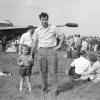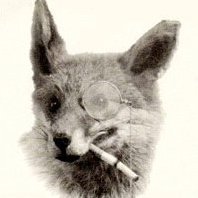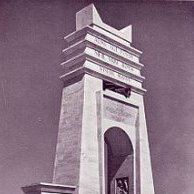-
Posts
83 -
Joined
-
Last visited
TimV1969's Achievements

New Member (2/9)
444
Reputation
-
If you haven’t been then the Jet Age Museum https://jetagemuseum.org is worth a visit - variety of Gloster-built aircraft or replicas, model kits in their shop and even a model display (although that must be quite well hidden as I managed to miss it on my only visit so far)
-
Not just impending - my pre-order from Jadlam arrived this morning! I knew in advance I wouldn't be able to make an HAS.7 straight from the box, fortunately I have a resin HAS.7 lower fuselage part in my spares box (presumably from RotorCraft? - I've lost whatever instructions I had for it). But thanks to this thread I also know to look out for a raised cabin floor and, by the looks of it, a shorter cabin door? Tim
-
The prototype (which the Airfix kit depicts, obviously, as the only that was built and flew) was the Rotodyne Y. There was a proposed larger Rolls-Royce Tyne-engined variant, known as the Rotodyne Z or FA-1, which is what what was ordered by New York Airways (possibly licence-built by Kaman) and BEA. That also would have had longer wings with swept-back leading edges, and a 'beaver-tail' arrangement at the rear. I built one a few years ago, using one-and-a-bit Airfix Rotodynes, and a Revell Transall C-160 which contributed the engines and part of the wings: I'd happily buy a 'new' one though - although I have bits left over to build a prototype, it would require splicing parts from two kits (I also later bought an incomplete kit off eBay) and, newly-created decals would be welcome! Tim
-
Thanks for your welcome, guys, and yes, it is a good kit for its age, comparable to Airfix's Lynx or Puma of the same era, although maybe not as nice as their Sea Sprite. Thanks for the reminder about weighting the nose, zebra, that does ring a vague bell from the previous one I built, several years ago. I think on that occasion I only noticed after assembly and had to drill a hole in the bottom of the fuselage to get some weight into it! This time I'll try to remember to put some Liquid Gravity in before I glue the floor in place. At least, unlike Airfix's Gazelle(*), there is a suitable cavity under the floor to hide it. So, a slow start so far on this, but I have completed the basic fuselage assembly, and completed and painted the interior. The seats look pretty good as they are in the kit, but I have added masking-tape seat belts, and a couple of strips of half-round plastic strip on the back to better represent the framework visible in reference photos. I also cut away the 'step' from the floor, which, as far as I can see, folds down when the winch is in use, as I want to make this model look as different as possible from my previous, Naval variant, and that means modelling it with the winch fitted, and the door open. This meant cutting the rear door out of the port-side glazing, which didn't go that well as I cracked the corner of the door glass. Fortunately I found I could cut out a similarly-profiled window from a left-over piece from an S&M Models Sycamore (knew I kept it in my spares box for a reason!) so hopefully that will come together later. For now though, the interior, placed (but not glued!) in the fuselage just to check that it fits: Those photos remind me that I need to scratch build some rudder pedals! Tim (*) built two gazelles as an adult, and one a long time ago, all of them tail-sitters!
- 11 replies
-
- 5
-

-
- SA319B
- Alouette III
-
(and 1 more)
Tagged with:
-
TimV1969 started following 1/72 Aerospatiale/Westland SA330E Puma , 1/72 FV432-30, Berlin Brigade , 225 1/72 Sud Aviation/Aerospatiale SA316/319 Alouette III - TimV1969 and 2 others
-
Made from the S&M Models FV432 Mk2/1, with a Friendship Models Fox Turret and, for these photos at least, an S&S models British tank crew figure. Painted in the Berlin Brigade Urban camouflage, using a matt white enamel base coat, Revell 79 for the Grey (representing RAL7031) and Revell 381 for the Brown (RAL8025), which to my understanding were the specified colours. Decals from the kit (which means the number plates are slightly wrong but hardly noticeable in this scale) and then all matted down with Humbrol matte enamel varnish - as the Brown is a satin paint. and some more photos 1/72 FV432-30 Photogallery Very enjoyable model to build, probably would have built it straight from the box if I hadn't found the Fox turret on the Friendship Model's stall at Telford last year... Tim
- 6 replies
-
- 16
-

-
I'd like to enter this group build with the 1/72 Sud Aviation/Alouette Alouette III, which I notice no one else has picked yet, and I think is eligible as according to Scalemates it was first released in 1980 so is a Classic? Looks like new parts were added for the civilian versions in 1989 but I won't be using them anyway. I've just bought a recent re-boxing of this (from Creative Model's bargain 'damaged box' category on eBay): but perversely, even though it comes with a nice-looking modern decal sheet for the Gendarmerie (much the best I've seen in a Heller kit), I intending building it as a SA319 from the Armée de l'Air, using earlier Heller decals and/or yellow numbers/letters from ModelDecal 50 (intended for the Puma): Should be fun to build, I don't remember any major problems with the previous one I built (as a Naval SA-316B - hence my desire to build a contrasting Armée de l'Air version with the Astazou engine) Tim
- 11 replies
-
- 8
-

-
- SA319B
- Alouette III
-
(and 1 more)
Tagged with:
-
There's MD Hobbies and Leisure, fairly close to the railway station - reasonable range of Airfix and Revell last time I visited, last year. They seem to be having problems with their shop website at the moment though! http://www.mdhobbiesandleisure.com/documents/contact.html
-
S&M Models have already done an FV432 in 1/72 scale, and I'm sure at Telford last year they were talking about doing an Abbot based on the common parts, but no sign of it yet...
-

1/72 Aerospatiale/Westland SA330E Puma
TimV1969 replied to TimV1969's topic in Airfix: The Golden Years GB
Phew! finished in the nick of time. The matt varnish did its job and was dry and ready for working on this morning. I finished spraying the rotor blades with Humbrol 163, and once that was dried, fitted them to the rotorhead (to which I'd added a few pipes from reference photos:) painted the inside of the tail position light with Tamiya translucent red (as reference photos showed it was a red bulb not a red light), put a dash of Molotow Chrome on the tail where that and the rear-most clear light were to be fitted, and mounted those: masked and painted the black area behind the exhausts, painted the port and starboard position lights with Molotow Chrome before adding the relevant shade of Tamiya Translucent paint: painted the various aerials and the windscreen-wipers Satin Black, added the wheels, and a left-over light from the Airfix Sea King HC.4: And finally, posing with the Scorpion in the background (and a couple of the WW2 ruined buildings for scale perspective) All-in-all, a very enjoyable build - Airfix could easily have re-released it with a new sprue with composite rotors and the various bits to bring it up to late-HC1 or HC2 standard, a la the Lynx HMA8 upgrade, but I don't suppose they will now - I'd happily build another one, which is just as well as I have a Heller boxing of it which I had to rob a couple of aerials from for this build. You could argue that the rivets are over-done, and the opening doors are a bit toy-like, but I don't mind that at all! Complete photogallery here Tim (hmmm, I tried to post this last night but it disappeared! it has now reappeared in my browser so hopefully it will post this time...)- 13 replies
-
- 12
-

-
- Puma
- Aerospatiale
-
(and 1 more)
Tagged with:
-

Airfix: The Golden Years Gallery
TimV1969 replied to Enzo the Magnificent's topic in Airfix: The Golden Years GB
Whew! Finished, in the nick of time... Airfix 03021 SA330 Puma, with Rotor Craft composite rotors, a light/lantern from an Airfix Sea King HC4 and a few scratch-built 'lumps and bumps. Main colours are Xtracolor RAF Dark Green and Lichen Green overcoated with Humbrol Matt Varnish, various other Humbrol and Revell enamels used for other details (Humbrol 163 for the Rotor blades to give some contrast with the Xtracolor shade, for instance). The only decals I used from the kit were the red lines around the door, home-made decals for the 'Danger' markings on the tale and the RAF logo on the doors, generic RAF lettering for the tail code, and small roundels from a Revell Tornado GR1.- 118 replies
-
- 27
-

-

1/72 Aerospatiale/Westland SA330E Puma
TimV1969 replied to TimV1969's topic in Airfix: The Golden Years GB
Lots of catching up to do here! Thought I'd posted at least one update after I assembled the fuselage, but apparently not. So, here goes: Fuselage assembled, HF aerials added on port side (borrowed from a Matchbox Wessex), and the 'handle' type aerials replaced with brass wire (but before I realised these were in the right position for a French Puma, or an HC2, but too far back for an HC1...): Then various late-HC1 'lumps and bumps' (to use the technical term) added, the glazing masked and added, and everything in Halfords grey primer: Then Xtracolor Lichen Green and Dark Green airbrushed: and then (as of last night, which I would have posted then if Photobucket hadn't been down) So today I have sprayed Humbrol Matt Varnish over the above (after I painted the centre of the roundels on the door - I printed those and the 'Danger' tail markings on clear decal paper, but the red obviously wasn't dense enough so I put a dob of Humbrol 153 on both doors which roughly matched the roundel on the tail - which was taken from a Revell Tornado), which should give me tomorrow to finish off, assemble the rotorhead and hopefully hit the 7th of October deadline! Tim- 13 replies
-
- 9
-

-
- Puma
- Aerospatiale
-
(and 1 more)
Tagged with:
-

1/72 Aerospatiale/Westland SA330E Puma
TimV1969 replied to TimV1969's topic in Airfix: The Golden Years GB
... so, onto the cabin interior. I sanded down the outside of the cabin windows, to eliminate the sunken hole, then polished them back to a shiny surface, and went round the edges with a Sharpie before fitting them into the fuselage. To represent the cabin insulation, I first stuck some plastic mesh to a flat surface (an old CD) to make a mould for it. Then, I just painted on some acrylic craft paint, waited for it to dry, peeled it off, and had an imprint of the mesh pattern in the still-pliable paint. This I could then cut into strips and shapes, and use to form the cabin insulation: (photo below also shows a piece of the dried acrylic paint ready to be cut to shape for the other side). If I'd thought ahead I'd have mixed some grey and silver acrylic paint and had a ready-coloured surface, but as it was I painted it with Humbrol 53, which doesn't look much like gun-metal to me but does look like a silvery-grey nylon-ish insulation material: and then assembled the cabin seats, cockpit (including using a spare decal from a Super Puma sheet for the central console) and cabin/cockpit floor: Next steps - fitting the interior parts to the fuselage side and gluing the fuselage halves together!- 13 replies
-
- 13
-

-
- Puma
- Aerospatiale
-
(and 1 more)
Tagged with:
-

1/72 Aerospatiale/Westland SA330E Puma
TimV1969 replied to TimV1969's topic in Airfix: The Golden Years GB
Catching up from the last couple of weeks, have had enough spare time to work on the kit but never quite enough each evening to do any updates here, so here goes: A comparison of the wider-chord composite blades with the metal original - unlike the Sea King, you can't easily convert between one and the other! Initial painting of the cabin seats - I used Humbrol 230 with a dash of 52 to give a metallic-y effect to try to replicate the nylon(?) originals: assembly and painting of the cabin and cockpit floors, the bulkhead between, assembly (including substitution of brass rod for various plastic bits) of the rotor-head, and assembly and painting of the main gearbox (may have the colour slightly wrong?) engines and cabin roof: more follows in the next post!- 13 replies
-
- 6
-

-
- Puma
- Aerospatiale
-
(and 1 more)
Tagged with:
-

1/72 Aerospatiale/Westland SA330E Puma
TimV1969 replied to TimV1969's topic in Airfix: The Golden Years GB
Absolute bargain, I felt a bit guilty about it when I got it home and saw how good it was. Still, the two RAF museums have done alright from me money-wise over the years, even with free entrance... And yep, pretty flash-free, only real flaws are sunken holes in the cabin windows (something my Kamov Ka-25 also suffered from, and now I check, my Heller boxing of the Puma too, so that must have been a common fault in the 80s.- 13 replies
-
- 1
-

-
- Puma
- Aerospatiale
-
(and 1 more)
Tagged with:
-
Hopefully I will have time for a second entry in this group build - and it's a kit I picked up for all of £2.50 in the RAF Museum at Cosford's shop last year. For that money I wasn't even expecting it to be complete, but it was, so with my notional savings I splashed out on the Rotor Craft composite rotors for it, and I'll be adding those for this build. I also have some spare Merlin HC3 photoetch, which will probably contribute at least the cockpit seatbelts, and some left-over Sea King HC4 bits (if I decide to do an HC2 the armoured seats might be right? need to check that). I will be building either a late HC1 or an HC2 - I really want to do it in the Dark Green/Lichen Green colour scheme, and it looks like all the in-service HC2s are in overall dark green which isn't as interesting. So, for now, the box and bits: Next steps: clean up the resin rotor blades and start assembly - with the interior, and main rotor gearbox/rotor head, including seeing which rods need replacing with brass or nickel wire, and where any additional pipes are obvious... Tim
- 13 replies
-
- 8
-

-
- Puma
- Aerospatiale
-
(and 1 more)
Tagged with:







